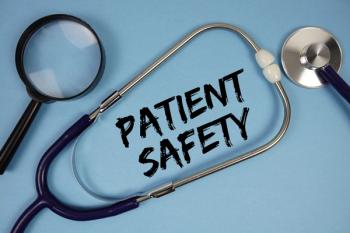
- Drug Topics February 2019
- Volume 163
- Issue 2
Tax Cuts and Jobs Act of 2017 Affecting Pharmacy Accounting
Pharmacies now may switch from accrual to cash accounting.
The Tax Cuts and Jobs Act of 2017 (TCJA) made significant changes to the tax code. One of the noteworthy changes that will impact pharmacies is the option to change from the accrual accounting method to the cash accounting method.
What Is an Accounting Method?
An accounting method is the method a taxpayer uses to compute income. It determines the timing of when income and deductions are recognized. The two overall accounting methods applicable to pharmacies are the accrual and the cash methods of accounting.
Accrual Versus Cash: The accrual method recognizes revenue when earned, such as when a prescription is adjudicated, and it recognizes expenses when incurred, such as when a purchase is made instead of when it is paid. The cash method of accounting recognizes revenues when the revenue is received and recognizes expenses when the expenses are paid. The key distinction between the two methods is simply the timing of when income and expenses are recognized.
Before TCJA, pharmacies were required to report on the full accrual method of accounting, unless exceptions were met. The TCJA changed the accounting method options available for pharmacies. Unless your prior three-year average gross revenues (gross receipts test) in the pharmacy exceed $25 million, pharmacies are now allowed (but not required) to report on the cash method of accounting instead of the accrual method. Owners with multiple pharmacies under common ownership, such as controlled groups, must aggregate revenues when determining the gross receipts test.
Inventory has its own set of rules under the accrual and cash methods of accounting. If you choose the cash method, the TCJA allows taxpayers to either treat inventories as nonincidental materials and supplies or conform to the taxpayer’s financial accounting treatment of inventories. There are complex issues outside the scope of this article with regard to inventory under the TCJA, so consideration should be taken with your tax professionals to navigate this area of tax law.
481(a) Adjustment: An IRS Form 3115 Change in Accounting Method will need to be filed with your tax return if you change accounting method. The accounting adjustment from the accrual method to the cash method is called a Code Section 481(a) adjustment. If the adjustment is negative (an expense), it can be deducted in the current tax year. If the adjustment is positive (income), it may be taken in year one or, if over $50,000, is spread over a four-year period.
Example: Assume a pharmacy has the following accrual balance sheet items: accounts receivable third-party of $300,000, accounts payable of $50,000, accrued payroll payable of $25,000, and accrued interest payable of $5,000. The pharmacy elects to report on the cash basis. An adjustment to remove these accounts from the balance sheet would be a negative 481(a) or expense of $220,000 ($300,000 - $50,000 - $25,000 - $5,000). This expense would be deducted in the current tax year and would decrease net income , and thus taxable income, of the pharmacy for the year. As you see, it results in significant tax savings!
Tax Planning is necessary to proactively plan and analyze these changes with an experienced tax advisor. Issues that relate to ownership basis and losses, potentially selling your pharmacy in the near term, and how this accounting change will affect your books and records are just some of the items to be considered. With careful planning, the potential tax savings for pharmacies under the TCJA are extraordinary, especially with the option to change accounting methods.
Articles in this issue
over 6 years ago
Nine Ways to Help Patients Better Adhere to Their Medicationsover 6 years ago
Opinion: Hard Work is Inevitable, but Burnout is Notover 6 years ago
Opinion: Pharmacists Are Best Suited to Improve Adherenceover 6 years ago
PPSI Honors Distinguished Person of the Yearalmost 7 years ago
Influenza Update: Antivirals Advance in Options, Indicationsalmost 7 years ago
Avoiding Pharmacist Burnoutalmost 7 years ago
How to Prevent Medication Errorsalmost 7 years ago
New Drug Review: Dsuvia (Sufentanil) for Acute Refractory Painalmost 7 years ago
How Hospital Pharmacists Are Dealing with Drug ShortagesNewsletter
Pharmacy practice is always changing. Stay ahead of the curve with the Drug Topics newsletter and get the latest drug information, industry trends, and patient care tips.













































































































































